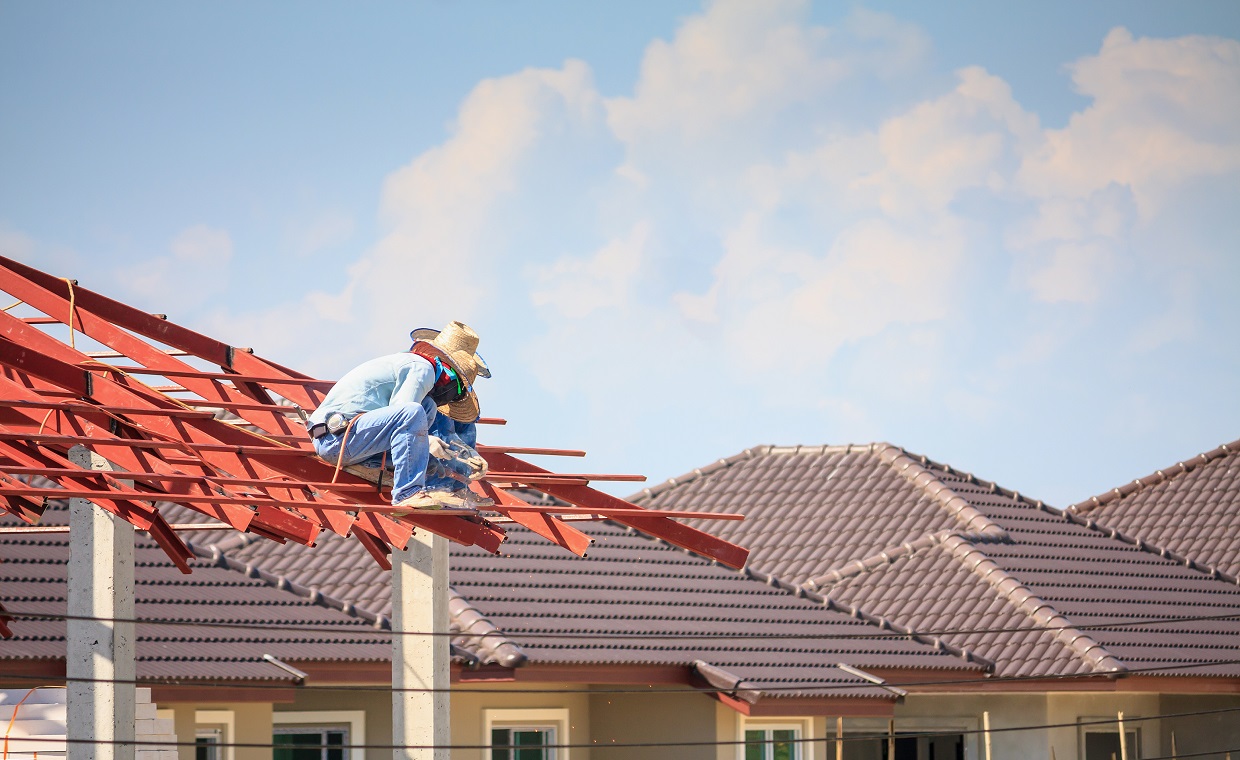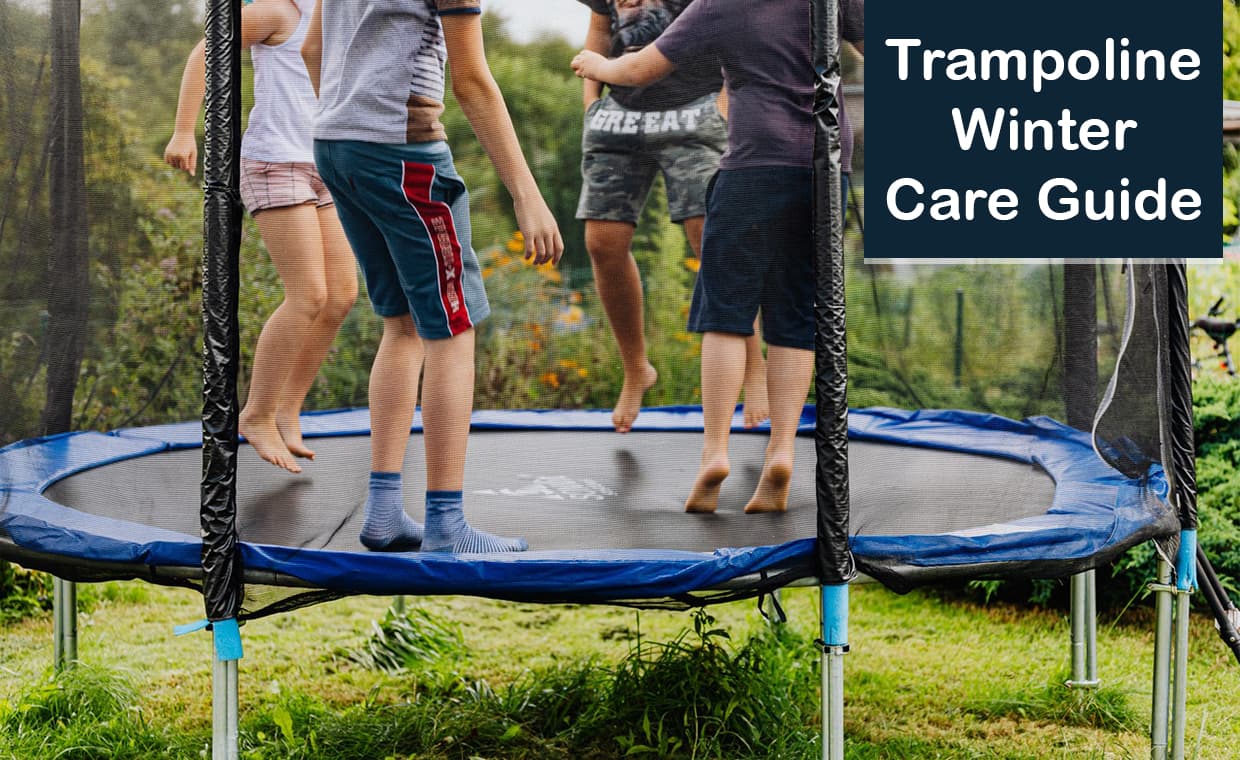
When you first bought a trampoline, you probably didn’t think you need to know how to winterize a trampoline. But trust us, it’s not something you want to postpone.
All that wet cold weather and snow can do some serious damage. So, if you want the trampoline to last more than one winter, pay attention.
Will Snow Ruin a Trampoline & Can They be Left Out in Winter?
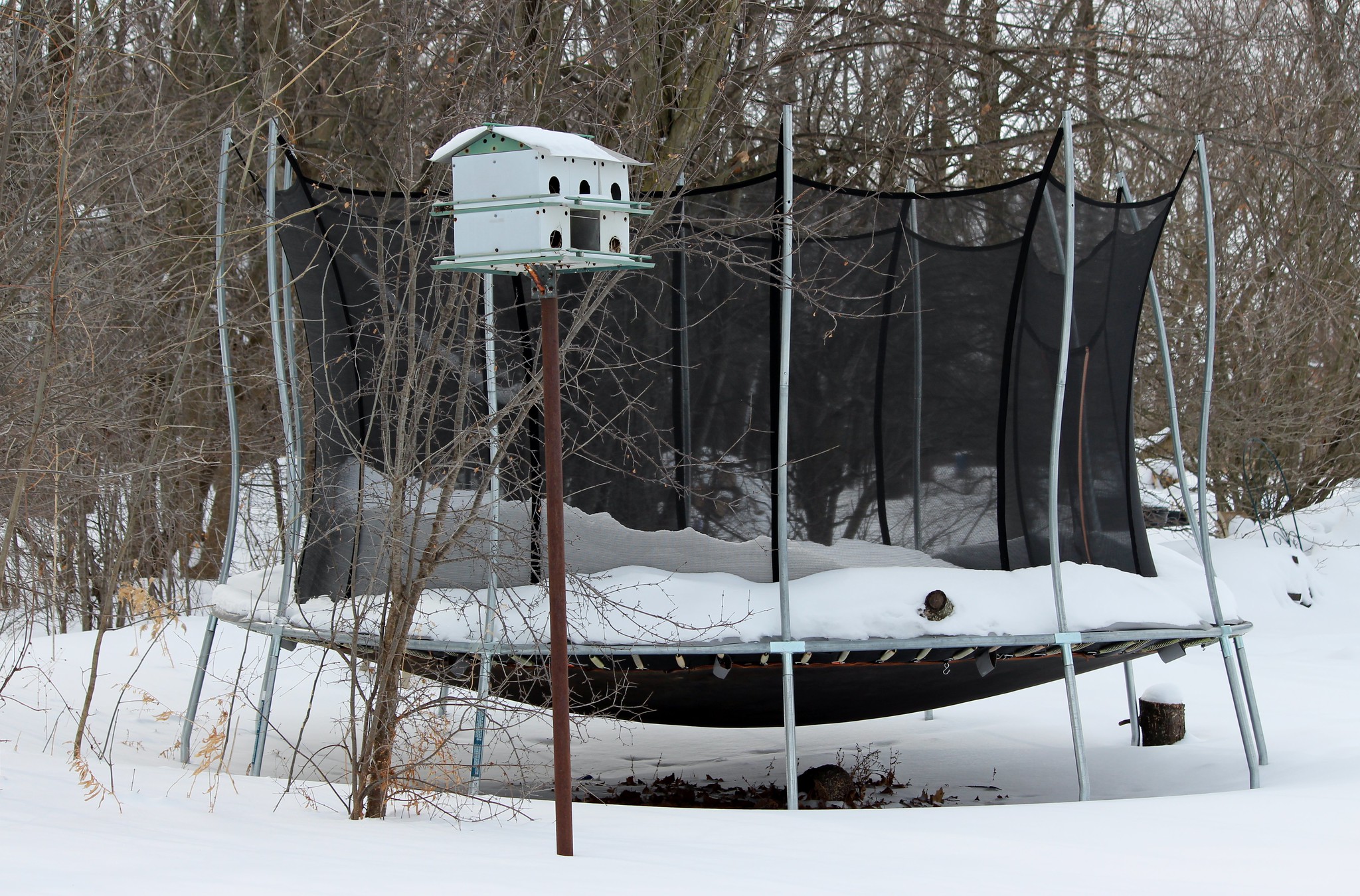
Your trampoline needs a little extra protection from the harsh weather during winters.
The constant moisture is the perfect breeding ground for mold, especially under the darkness of the pads. The pads could also split from the changes in temperature and you don’t want that to happen as it’s expensive to fix.
Similarly, the jumping surface can crack. This could happen when there is too much heavy snow or when you have had a wet trampoline for too long.
You should also be wary of strong winds since that can cause the enclosure netting to tear. And finally the worst damage; parts of the metal frame can rust which is a serious safety hazard when it’s back in use.
The good news is, you can avoid all that by learning how to store a trampoline in the winter.
What to Avoid Doing to Your Trampoline?
Before we get into the do’s, let’s talk about some of the definite don’ts for winterizing a trampoline.
1. Don’t Use a Snow Blower or Snow Shovels to Remove Snow

We spoke to James Reeves from Snow Blower Guides and he gave us the breakdown of what to avoid.
“Even small electric shovels can tear a hole right through your jumping mat or frame pads, or could even get caught in the safety netting.” James said, before adding, “you’ll damage both your snow blower and trampoline, and getting them fixed could cost you well over $500.”
So we recommend you heed this advice and avoid using anything mechanical to clear snow from your trampoline.
2. Don’t Use Commercial Ice Melting Products
You cannot jump on a frozen trampoline (please don’t!) but don’t rush getting the ice off.
Avoid the store-bought ice melting products because not only will they leave ugly stains, they can also weaken the materials which create an accident waiting to happen.
3. Don’t Jump on a Wet or Snow-Covered Trampoline
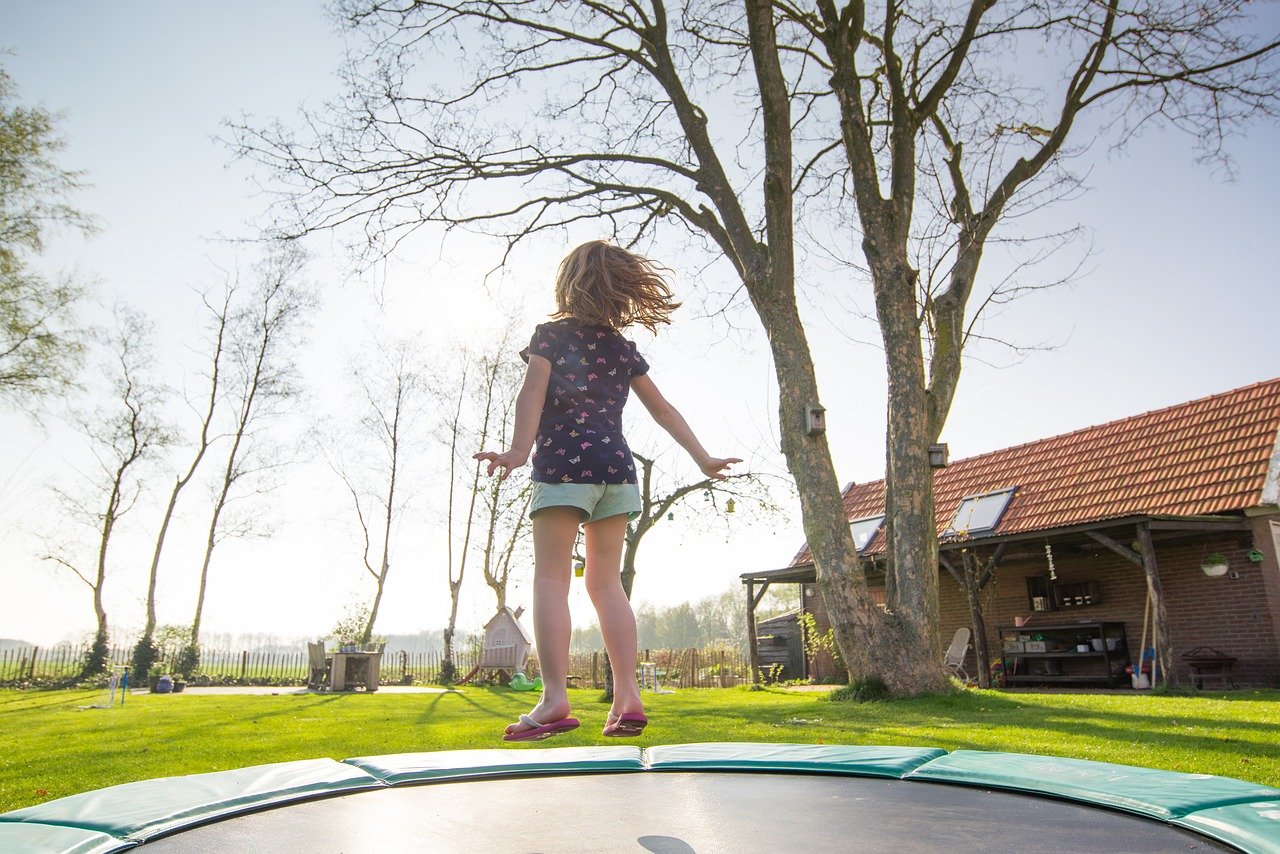
Kids will love winter jumping but don’t let them hop on when the trampoline is still wet or covered with snow.
During the colder months, have clear rules on what to do before jumping because none of us want a trip to the emergency room.
What are the Benefits of Storing a Trampoline Correctly in the Winter?
You might be worried about having enough space to store your trampoline, but in some weather conditions, it is really the best choice. Even when you do everything right, there might still be some wear and tear caused by the cold weather.
If you know how to disassemble a trampoline, consider storing it in the garage during winter. Here’s why:
- No need to clear snow
- Avoids rusting of metal parts
- Keeps trampoline surface dry and strong
- Protection from high winds
How to Winterize a Trampoline: Full Step By Step Guide
Trampoline winter care doesn’t have to be complicated, even taking apart a trampoline doesn’t need to take too long. Follow these steps to get your trampoline ready for winter weather.
Step 1: Remove Accumulated Snow
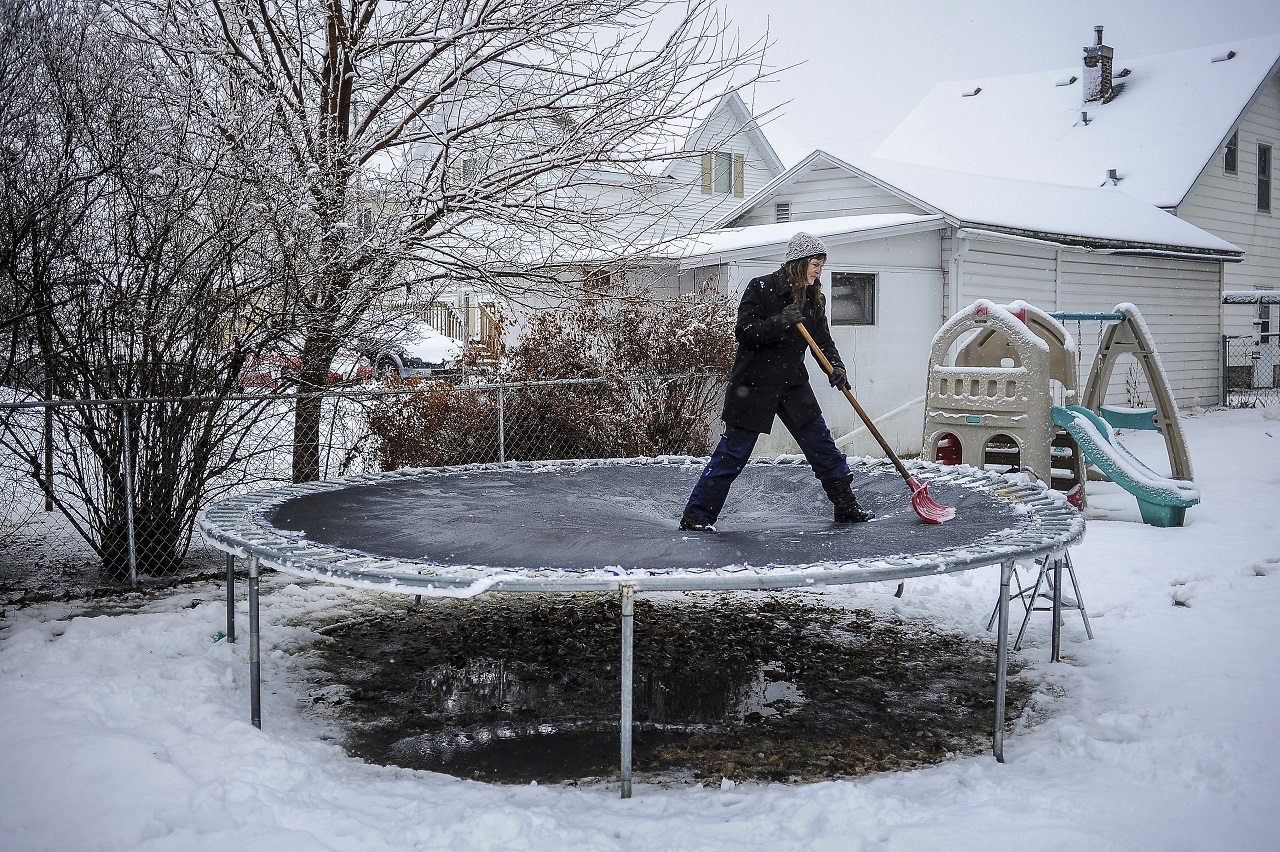
Forgetting to winterize a trampoline before the first snow falls is not a disaster. It just means that there are a few extra steps you need to take before disassembly.
Use a large thick bristle brush to remove any snow from the trampoline and then go over it again with a cloth. Make sure everything is completely dry before you do anything else.
Step 2: Remove the Net Straps and Netting
Take off the net straps from the top and the sides so that you can fold up the netting and keep it inside for winter. The subzero temperatures might cause some ice to build up which will affect the material.
Also, it may not look like much can get stuck on the netting but dust and dirt will accumulate over time.
Take off the netting and throw it in the washing machine – you might even notice that it has changed colour.
Step 3: Remove What Shouldn’t Get Wet
Even if you have a trampoline cover, it is a good idea to take off the frame pads and frame mats. Most already have a water-resistant cover but don’t underestimate the effects of snow.
Take them off and give them a proper cleaning before storage. They may look clean enough but you’d be surprised what comes off when you go over it with a damp cloth dipped in warm water and mild soap.
Step 4: Clean & Dry the Jumping Surface
This is where your children jump with bare feet so keeping it clean should be your priority. One of the trampoline winter risks is mold build-up and ironically, trampoline covers don’t help.
Why? During winter, moisture can remain between the cover and the jumping pad and you know what that means. So, remove it and wipe it clean before rolling it up and keeping it dry in the shed.
Step 5: Attach an Anchor Kit
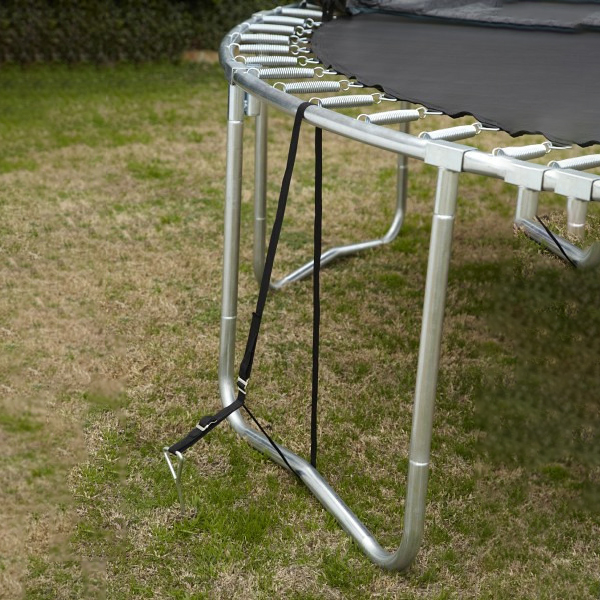
We all know the sound of winter winds rushing around the house. They can be intense so imagine the forces your trampoline needs to resist.
We highly advise getting specialized anchor kits and setting them up as early as fall. A trampoline that goes flying around during bad weather can cause serious damage to your house and hurt anyone walking by.
Step 6: Put on a Trampoline Cover

A trampoline cover is a basic necessity for trampoline care. It is also what will save you from disassembling the trampoline completely.
Just make sure that you are using a weather cover that is appropriate for winter. A thin spring/summer cover won’t offer enough protection.
Step 7: Disassemble the Frame (Optional)
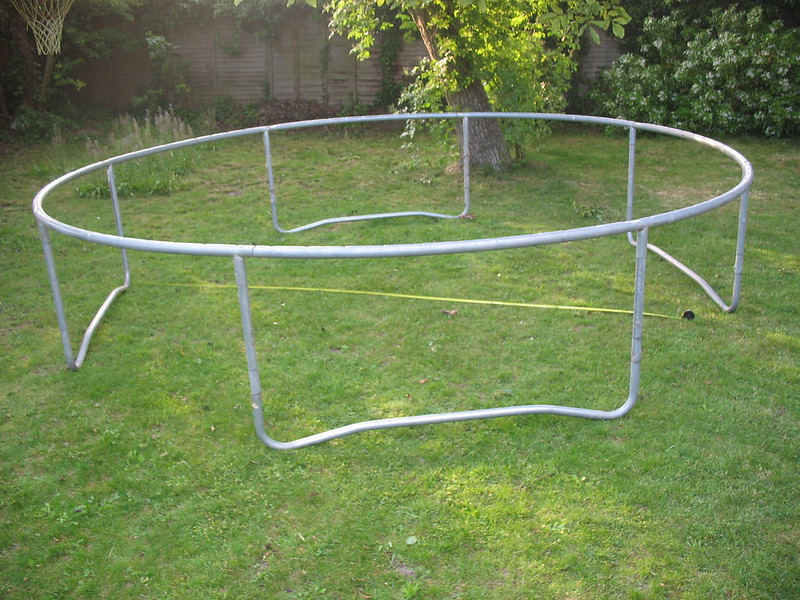
Most trampoline frames are made with rust-resistant metals but it still doesn’t hurt to err on the safe side. This is especially true of the springs which can snap from rust but also from the moisture and freezing temperatures.
So, if you want your trampoline to last for more than one winter, it is best to take it apart and store it inside. It may be more work but it does mean you don’t have to buy a new trampoline next spring.
Get a bag that fits all the frame parts or pack them into a box. Make sure that the bottom of the bag or box won’t get wet during storage and you’ll still be happy trampoline owners for many years to come.
Our Final Advice to Anyone with a Backyard Trampoline
Keeping your trampolines clean and dry during winter is key to keeping it in good shape. If you’re only going to remember one thing from our winter care tips it should be that: keep it clean and dry.
Don’t postpone cleaning accumulated snow because the longer you wait, the more work it becomes and the more damage it will do.
Let’s make trampoline winter care as simple as can be – your kids will thank you for it during their next jumping session when the warmer weather returns.
























